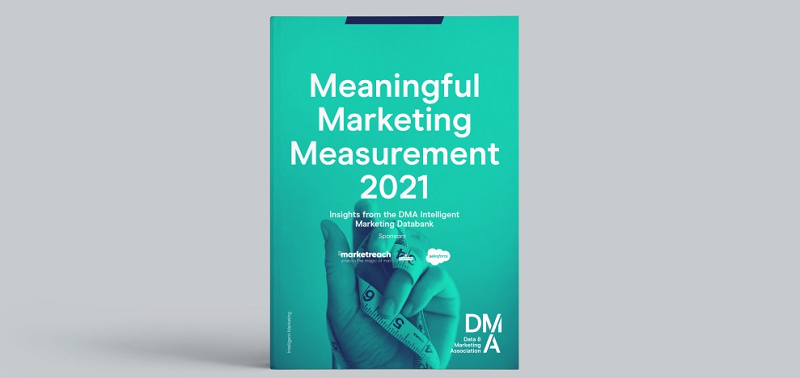Over two-fifths (41%) of current industry measurement metrics do not truly reflect marketing performance, instead showing only campaign delivery performance, according to new research.
The Data & Marketing Association (DMA) has published the ‘Meaningful Marketing Measurement 2021’ report, the first in a series of analyses into marketing effectiveness, uncovered through examination of its new Intelligent Marketing Databank.
Built on the foundations of over 850 entries to the DMA Awards (dating back to 2017), the new Intelligent Marketing Databank provides a perspective on the evolution of marketing effectiveness in recent years.
The insights span brand and response campaigns, retention and acquisition campaigns, single to multi-channel campaigns, and 20 industry sectors. The findings also address some of the challenges highlighted by a cross-section of industry experts in the DMA’s ‘Making Measurement Meaningful’ whitepaper.
Of the 167 measures of effectiveness identified across these award entries, 59% relate to response, brand and business measures and 41% relate to campaign delivery measures that obscure the true picture of campaign impact.
A common issue with measuring the impact of marketing campaigns is the lack of a common language around campaign measurement, which often masks the true picture of effectiveness. With 167 different methods of articulating campaign results being employed, the scale of this issue is all too apparent.
“As marketing professionals, we should be constantly striving to unearth new, rich data sources that contribute to both our understanding of marketing effectiveness and the measurement of this effectiveness. As such, we must all also try to be better measurement professionals too,” said Tim Bond, Director of Insight at the DMA. “This analysis of the Intelligent Marketing Databank specifically addresses some of our industry’s key measurement challenges, it will also inform future solutions to measurement best practice and guidance across the industry.”
One of the report’s conclusions is that marketers should strive to leave campaign delivery metrics in their media planning and auditing documents, where they belong. Because when it comes to campaign evaluation and post-campaign reports, the aspiration should be for 100% of campaign effectiveness measures to relate to response, brand or business impact. Not the current 60:40 split.
Jonathan Beeston, Product Marketing Director, EMEA, Marketing Cloud at Salesforce commented: “At the heart of the accelerated digital transformation we are witnessing today is a sharp focus on what really matters to a business. The ability to connect campaign activity to business effects that are meaningful to the board is what sets great marketing teams apart. It’s time for marketing leaders to step up and become data champions. Marketing leaders who set aside the time and resources to make this a priority will be strategically set up for future success.”
Amanda Griffiths, Head of Communications Planning at Marketreach, added: “We’re pleased to be part of this breakthrough in measurement. This robust framework highlights how mail delivers in combination with other channels in an integrated media world. The ‘meaningful metrics’ identified in the report, highlight why mail has been central to so many campaigns in the past year, building brands and driving measurable success. We look forward to seeing the findings from this study being implemented to improve campaign effectiveness and measurement for the future.”
This report has been developed in partnership with Data Stories Consulting.
Further information can be found on the DMA website.
